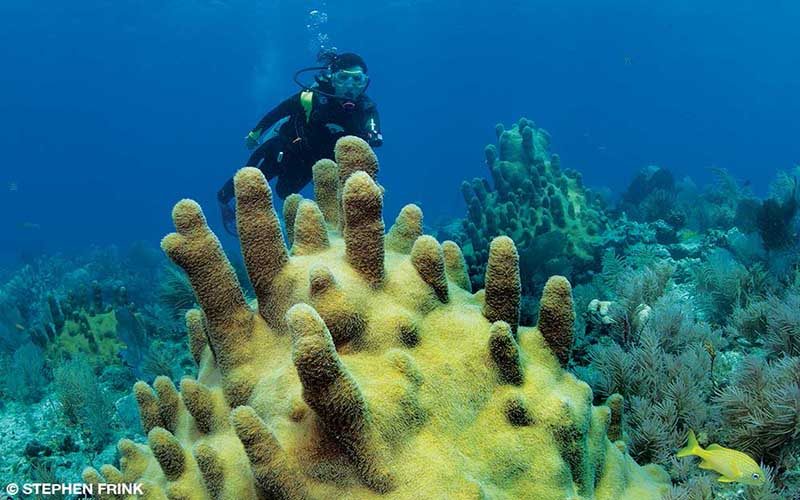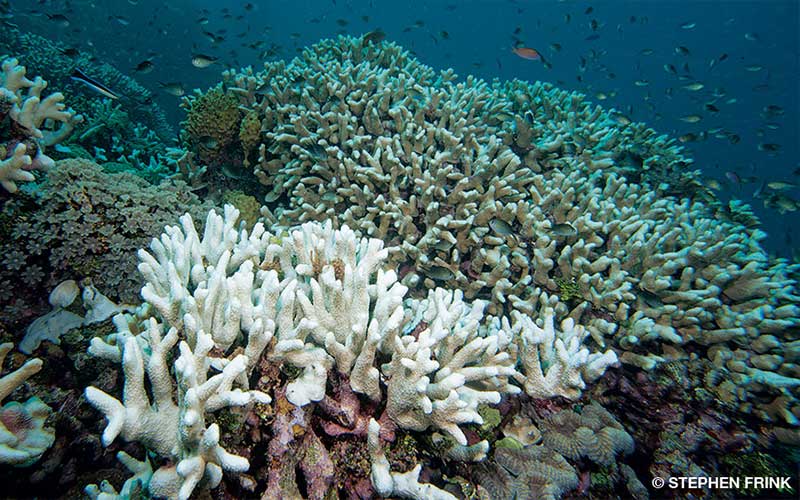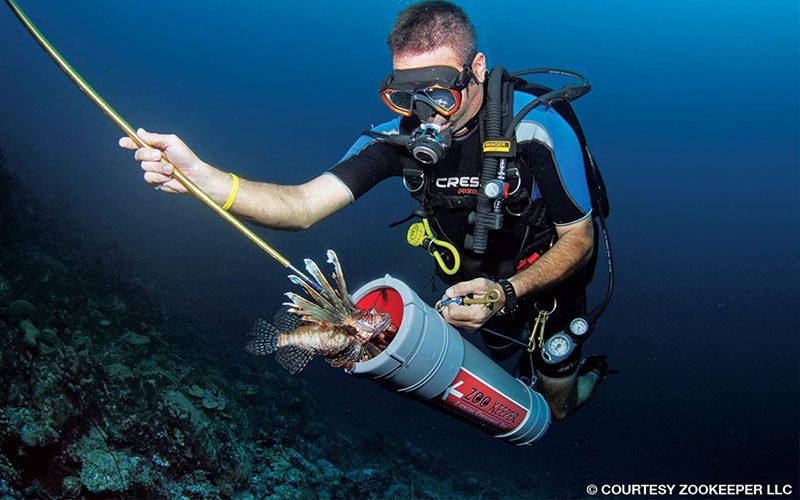The Last Unicorns
The pillar coral is as unique in its taxonomy as it is in its growth form. It is also poorly studied — and it is in decline. Efforts have ramped up to study and conserve this species.

The pillar coral is as unique in its taxonomy as it is in its growth form. It is also poorly studied — and it is in decline. Efforts have ramped up to study and conserve this species.

Corals bleach, or turn white, when their symbiotic algae are expelled from the corals’ tissues due to stressors such as excessively warm water. Bleached corals can and do recover when favorable conditions resume.

Lionfish pose a threat to native species as their numbers are skyrocketing out of control. The best way to solve the problem of invasive lionfish? A fork.

Menhaden, also known as bunker, are forage fish that play a critical role in the ocean food web. They are a vital source of food for wildlife up and down North America’s Atlantic seaboard. But their population management ignores the importance of the food web. Learn more and what you can do.

Maintaining a respectful distance from potentially harmful species underwater is a tenet of good recreational diving and a frequent topic of charter boat predive briefs. But those venomous fish you have learned to avoid might save your life someday.

Mangroves live along subtropical and tropical coastlines. Their upper trunk, branches and leaves grow above the waterline, but an extensive network of roots remain mostly underwater. Dense patches or forests of mangroves are habitats for terrestrial, estuarine and marine species that include invertebrates, fish and many types of seabirds and waterfowl, and they provide shelter as well as feeding and breeding space for 174 marine megafauna species. Mangrove forests provide also protect coastlines against erosion and flooding and help mitigate climate change.

Thanks to warming ocean temperatures, animal encounters have changed and increased. Read about the unique sea creatures divers are interacting with.

Manta rays are often forgotten in conservation and research efforts. Several species of rays are under threat. Learn more about manta rays and what you can do.

After helping to establish the world’s first shark sanctuary in his nation’s waters in 2009, President Tommy Remengesau Jr. of the Republic of Palau signed legislation last year that set aside 80 percent of his small west Pacific island nation’s ocean as a fully protected marine sanctuary.

Divers should take a stand to end the shark-fin trade. A bipartisan bill before Congress is poised to stop the sale of shark fins in the U.S.